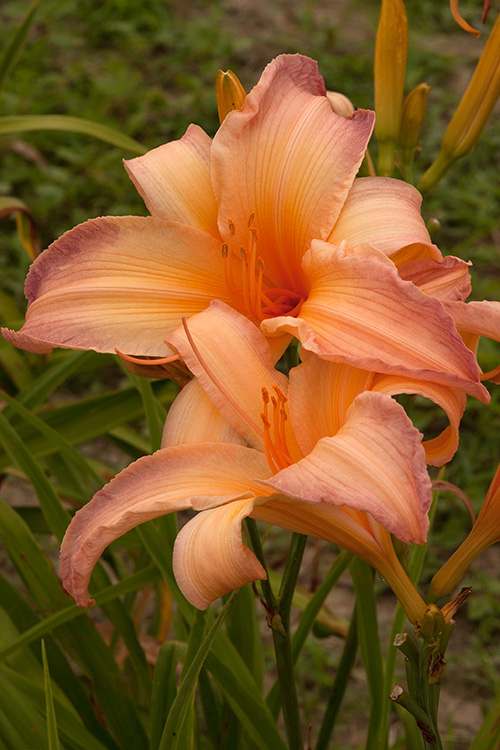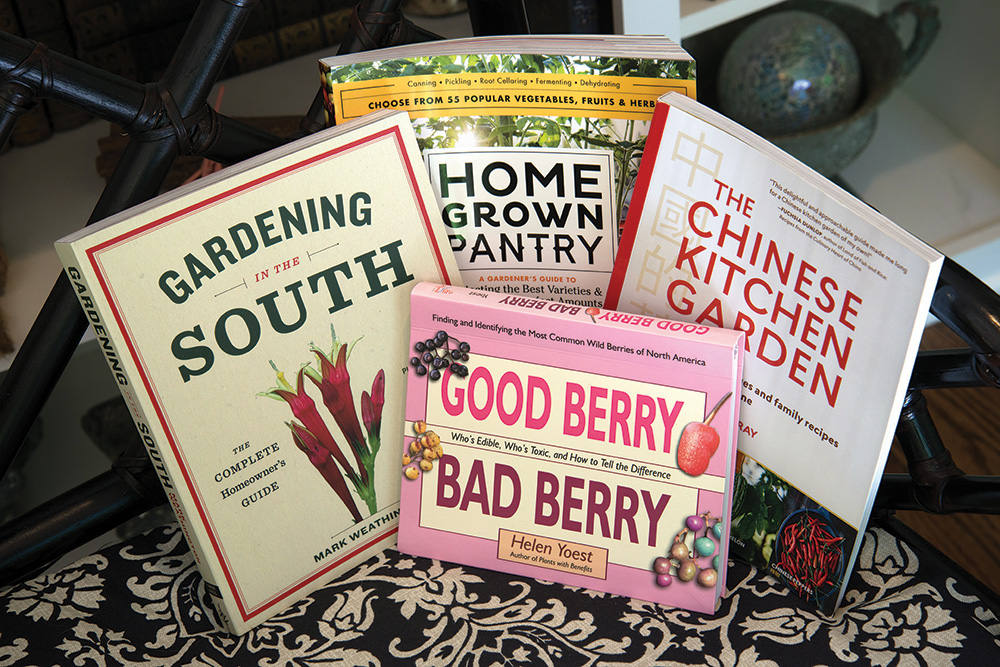As the summer really starts to simmer, gardening outside begins to feel more like work than a pleasant chore, so why not take a break from the heat? Fix an iced tea, settle into the most comfortable chair in your home, and fall into one of the following recently published garden books.
Gardening in the South by Mark Weathington (Timber Press, 320 pages, $24.95 paperback). Weathington is director of the JC Raulston Arboretum in Raleigh, so it is safe to say he knows more than a little about plants. This book is further proof of the fact. With nearly every page sporting a full-color image, Weathington’s guide takes readers on an enjoyable stroll down the paths of ornamental plant possibilities for Southern gardens. Naturally there is an extensive — and impressive — section on individual plant selections, along with growing tips, but bonus chapters covering such subjects as Southeast geography, growing seasons, design ideas, plants for problem spots, garden soil basics and pests are included to make this book a complete reference for new as well as experienced gardeners.
Homegrown Pantry by Barbara Pleasant (Storey Publishing, 320 pages, $22.95 paperback). Gardeners who like growing their own edibles often run into a problem: bumper crops. As an alternative to overusing and overeating any surplus in a short amount of time, Virginia writer Pleasant’s latest book shows gardeners the many ways to store extra produce. Dehydrating, pickling, canning, fermenting and even root cellaring are all covered as ways to extend the enjoyment of garden-to-table edibles, and these are accentuated with interesting “Harvest Day Recipes” that are dotted throughout the book. But wait, there’s more. Pleasant additionally shares her expert growing advice for 55 different vegetables, herbs and fruits, which also includes variety recommendations as well as pointers for dealing with pests and diseases.
Good Berry Bad Berry by Helen Yoest (St. Lynn’s Press, 100 pages, $18.95 paperback). The North American woods brim with wild berries that tempt hikers not only to take nibbles but to possibly grow in their backyard gardens. As Yoest (a Raleigh resident) shows, some native berries will play nice in the cultivated landscape and the tummy, but some will definitely not. Presented in a flip chart format, this book covers 40 different plants, providing identification features, habitats, hardiness zones, and why each are “berry” good or not.
The Chinese Kitchen Garden by Wendy Kiang-Spray (Timber Press, 240 pages, $19.95 paperback). Here is just the book for backyard growers who want to tinker with vegetables beyond the typical rows of tomatoes, peppers, squash and green beans. Rockville, Md., gardener Kiang-Spray nicely melds the gardening wisdom of her Chinese family with the viable realities of growing Far East veggies in American gardens. The result is a brave, tasty new world for adventurous gardeners. Lotus root, bitter melon, choy sum, Malabar spinach, kabocha — these and many more delectable edibles are highlighted, along with generous helpings of intriguing, tempting recipes. And although the vegetables are unusual, they are not unattainable. Kiang-Spray also includes a helpful seed source list.

When dividing daylilies, each division should have two to three stems or fans of leaves with all roots attached. Dig up the entire plant and gently pull the fans apart. Cut the foliage back, leaving only five or six inches. Place the plant in the soil so the crown (the portion where the stem and root meets) is one inch below the ground line.
When the flowers of daylilies fade away, pick off the spent blossoms. For reblooming daylilies, this will encourage even more flowers, but for all daylilies, it will prevent seed production, which will sap energy that would otherwise be stored and used for next year’s flower show.
Thinking about letting the seeds mature to try growing more of your daylilies? Think again.
More likely than not, they will yield uncertain, substandard offspring. Dividing daylily clumps is a faster way to propagate these beauties, and the progeny will be true copies of their parents. Early fall is a good time to dig and divide your pretties.
To Do in the Garden
July
- Are pesky neighborhood squirrels, dogs and cats enjoying your garden too much? Their romps through your plants can be made less fun with liberal sprinklings of sneeze-inducing, finely ground black pepper. Additional applications will be necessary after each rain.
- Cut your lawn’s grass when it is dry, not wet. This will not only help prevent soil compaction and turf injury, but it will also lessen the spread of grass diseases.
- Grass suddenly die? Even with the summer sizzling, it might not be from lack of water. Dig into the dead area to check for signs of underground grub infestation in the lawn’s root zone.
- Pick vegetables such as beans, okra, squash, peppers, cucumbers and indeterminate tomatoes every week to encourage the plants to produce even more.
- To encourage continued growth and production from both ornamental and vegetable annuals, renew mulch around the plants to keep the roots insulated from the harsh heat. This will also help retain and stabilize ground moisture.
- If hot weather is melting holes in the flower border, replant with such heat-loving annuals as celosias, marigolds, portulaca, petunias, salvias and zinnias.
- Free plants! Now is a good time to propagate such ornamentals as acuba, azalea, buddleia, camellia, clematis, nandina, gardenia, holly, kerria and weigela by taking semi-hard cuttings.
- Continue to change water in the birdbath weekly, and set out fresh seed for your feathered friends.







